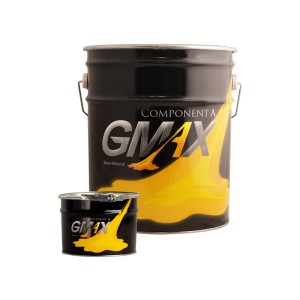
GMAX Polysulfide
Polysulfide adhesives are the top choice for sealing double-glazed windows due to their superior chemical resistance and long-lasting performance. These adhesives effectively preserve argon gas between the two glass panes, ensuring a secure and energy-efficient seal. Polysulfide adhesives maintain their elastic and adhesive properties over time, making them perfect for high-performance sealing applications.
These adhesives offer excellent resistance to water, oils, chemical solvents, and weathering, making them suitable for a wide range of environments. Available in one-part, two-part, and coating formulations, polysulfide adhesives are easy to apply and provide a reliable bond for double-glazed windows.
Polysulfide adhesives are highly effective at low temperatures, down to -62°C, but may soften and lose effectiveness at higher temperatures between 70°C to 94°C. For durable, weather-resistant window seals, polysulfide adhesives are the ideal solution for ensuring long-term performance and energy efficiency.
technical specifications
|
Component A viscosity |
650/000~900/000 |
|
Component B viscosity |
150/000~250/000 |
|
Mixture gel time (20 c) |
25 min~10 |
|
Initial setting time of polysulfide mastic 24 hours and final setting time of polysulfide mastic |
7 days |
|
Tensile strength |
156N at 150% traction |
|
Interruption due to traction |
(Elongation @ break) more than 500% |
product usage
Polysulfide sealants are widely used in construction, automotive, and industrial applications due to their exceptional durability, flexibility, and chemical resistance. Ideal for sealing joints in concrete structures, double-glazed windows, and fuel storage tanks, polysulfide adhesives provide long-lasting protection against moisture, extreme temperatures, and harsh environmental conditions. Their superior adhesion ensures airtight and waterproof seals, making them a preferred choice for marine applications, airport runways, and bridge construction. With excellent resistance to fuels, oils, and chemicals, polysulfide sealants enhance structural integrity and longevity. Whether used in glazing, insulation, or industrial bonding, these high-performance sealants offer unmatched reliability.
how to maintain
Store GMAX polysulfide mastic in its original sealed container, in a cool, dry location with temperatures between +5°C and +27°C. Under these ideal storage conditions, the product maintains its quality and effectiveness for up to 12 months.
If the mastic comes into contact with skin or eyes, rinse immediately with plenty of water and soap to avoid irritation.
For maximum safety, it is strongly recommended to wear protective gloves, goggles, and a face mask when applying the primer or polysulfide mastic, especially in poorly ventilated or confined spaces. This ensures a safe and efficient application process.
How to use
Proper preparation of the seam before applying the polysulfide mastic primer is crucial to ensure optimal performance and adhesion of the product.
Here’s a step-by-step guide for seam preparation:
-
Clean the Seam Wall: Ensure the seam is completely dry and free from dust, grease, and any particles that could affect adhesion. Thoroughly remove any previous layers of polysulfide mastic using mechanical cleaning methods such as milling machines for the best results.
-
Thorough Cleaning: After mechanical cleaning, use strong suction devices or wind pressure to thoroughly clean and dry all internal surfaces of the seam to ensure they are completely free of any residues.
-
Primer Application: Once the seam is prepared, apply the polysulfide mastic primer. Allow the primer to evaporate for approximately 20 minutes before applying the main polysulfide mastic. If more than 2 hours pass between the primer and mastic applications, reapply the primer to ensure a proper bond.
-
Application of Mastic: Depending on the type of polysulfide mastic, it can be applied using a specialized gun, trowel, or casting method. Choose the method that best suits your product.
-
Edge Cleanliness: For clean, neat edges, adhesive tape can be used. Be sure to remove the tape before the mastic dries to avoid damaging the seal.
-
Smoothing the Surface: Use a closing trowel with a small amount of detergent to smooth the final surface. For cast-type polysulfide mastic, no additional leveling is needed as it is self-leveling.
By following these steps, you’ll ensure the proper application and performance of the polysulfide mastic for superior sealing.

